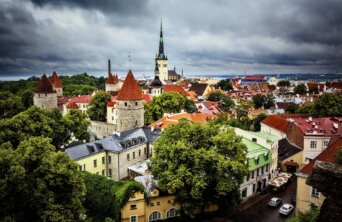- About
- Topics
- Story
- In-Depth
- Picks
- Opinion
- News
- Donate
- Signup for our newsletterOur Editors' Best Picks.Send
Read, Debate: Engage.
| topic: | Economic Fairness |
|---|---|
| located: | Estonia |
| editor: | Katarzyna Rybarczyk |
Estonia’s urban-rural divide, characterised by a high contrast in living conditions and economic situation, has been a subject of debate for many years and many Estonians had hoped that the recent parliamentary elections would bring a positive change; instead they brought the problem to new heights.
While the Reform Party, led by incumbent Prime Minister Kaja Kallas, won the elections, the Centre Party - traditionally supported by rural voters and Russian speakers - lost more than half of its seats. As a result, there has been a growing sense of political disenfranchisement among rural communities, as well as an increased fear that policies will continue to overlook their needs.
Already, over the last three years, decisions made by those in power contributed to deepening the economic isolation of rural areas. “Roughly half of the population lives in dynamic urban regions, while the other half lives in areas that do not reach the same level of welfare. At the same time, the latter category consists of two-thirds of Estonian municipalities with higher rates of unemployment and poverty, higher dependency ratios and lower income levels as well as a lower provision of public services,” reported the Friedrich Ebert Foundation.
A survey conducted by the European Union revealed that only around 89 percent of rural households in Estonia have access to the internet. This can impede people’s digital participation, limiting their opportunities and accordingly exacerbating socio-economic disparities.
Furthermore, those living in impoverished parts of Southeastern Estonia lamented that “poor quality or availability of public services is one of the reasons people are leaving” to chase better lives in urban regions. Studies show that this trend is causing a “shortage of children, young people and women in the marrying age, and an over-representation of 50-65-year-olds in the local population.”
In light of these concerns, Estonia must focus on empowering rural communities, enhancing their quality of life, and alleviating the disparities. How could that be achieved?
One solution is, for instance, introducing policies that address the economic stagnation in rural areas and foster economic growth there. Additionally, investment in infrastructure and improving internet connectivity could provide the rural population with digital opportunities, thus reducing socio-economic gaps. Finally, the government should aim for uniformity in access to healthcare, education or social services across urban and rural areas. This is essential to eliminate the need for migration to large cities.
Ultimately, such measures could foster a more balanced economic development across Estonia, thereby ensuring that all communities benefit from the nation's progress.
Image by Leo Roomets

